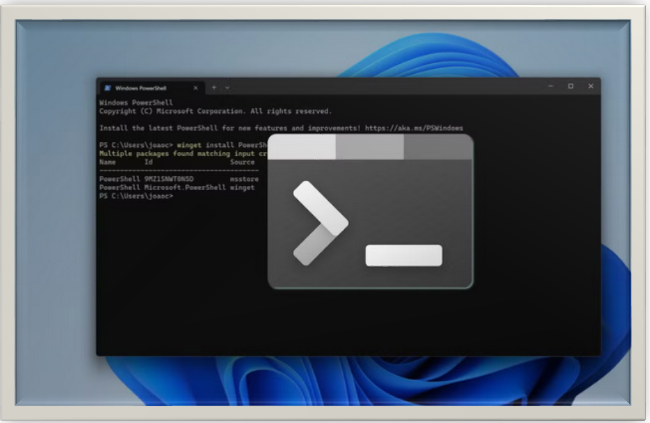HOW TO BOOST YOUR WI-FI SIGNAL STRENGTH FOR SEAMLESS CONNECTION
Discover expert tips to boost your Wi-Fi signal for seamless connectivity. Improve your internet speed and enhance your online experience today! #WiFISignalBoost #InternetSpeed

INTRODUCTION:
Have you ever found yourself in a state of suspense and annoyance when streaming your favorite show? Or perhaps there is a "constrained network" notice causing that important video call to keep dropping? For seamless online conversation, streaming, and web surfing, a strong and stable Wi-Fi connection is essential. Ineffective Wi-Fi signal quality can kill the buzz and make your online activities less enjoyable. Fortunately, you can have a faultless network and maximize the quality of your W-Fi connection with a few easy steps. Here's a detailed guide that's easy to follow even for beginners to improve your Wi-Fi connection and achieve a seamless, frustration-free online experience.
Understanding Signal Strength:
Imagine your Wi-Fi switch acting as a lighthouse and sending out signal waves across your home. These invisible waves transport the internet data that enables you to stream videos, browse webpages, and communicate with loved ones virtually. However, a few elements can weaken these waves, resulting in annoying slowdowns and signal dropouts. Dividers, furniture, and even commonplace electronics like baby monitors and cordless phones can function as flag plugs, obstructing the free flow of data.
Optimizing your Wi-Fi signal strength
1. Choose the right location to place your router:
Similar to determining the ideal location for a houseplant, the overall placement of your Wi-Fi router affects signal quality. Here are some wise guidelines:
· Central Command: Place your router in the middle of the room in your house. This ensures that the signal reaches every corner in the most comparable way possible.
· Upward Ascension: Don't put your switch on the ground or hidden within a cabinet. For better signal propagation, elevate it on a shelf, or mount it on a wall at mid-height.
· Take Care of the Blockers: Remove any clutter, especially heavy books or metal objects, from the area surrounding your router. These can dampen the signal, creating Wi-Fi dead zones inside your home.
· Diminish impedances: Keep other electronics away from your router to reduce interference from things like microwaves, Bluetooth devices, and cordless phones.
The majority of routers transmit on many Wi-Fi channels, similar to highway lanes. These channels may have become congested with interference from nearby Wi-Fi networks in certain instances. Here's how to determine your switch's clearest path:
a. Get a Free Wi-Fi Scanner App: These programs scan through available Wi-Fi channels to identify even the most crowded ones.
b. Open your router settings and log in: Every router has an intriguing method, usually via a web interface, to access its settings. Consult the manufacturer's website or the manual that came with your router for more details.
c. Channel surfing: Once you're logged in, locate the option to change the Wi-Fi channel. Choose the channel that has the least amount of traffic by the Wi-Fi scanner application.
2. The power of rebooting:
Restarting your router can occasionally solve problems, just like restarting your computer. Quick reboots can improve performance and fix brief bugs, which may improve the quality of your Wi-Fi signal.
3. Upgrade When Necessary:
Technology advances swiftly, and Wi-Fi routers are not an exception. The ever-increasing number of Wi-Fi devices in our homes, including smartphones, tablets, smart speakers, and portable workstations, maybe too much for older routers to handle. Regularly check your router for firmware updates, and think about upgrading to a more modern router with the newest Wi-Fi standards (such as Wi-Fi 6) for improved performance, speed, and advanced simultaneous handling of multiple devices.
4. Get Rid of the Signal Hogs:
While some devices improve our lives, others may be unseen signal stealers of Wi-Fi. Cordless phones, Bluetooth speakers, and microwaves all operate on frequencies that may interfere with your Wi-Fi signal. Try turning these devices off, especially if you are experiencing buffering or slowdowns, to see if that improves your connection.
5. Optimize Router Settings:
To get the best performance, go to your router's settings and change the channel and bandwidth settings. Try different settings to find the best configurations fit for your surroundings.
6. Mesh Up for Maximum Coverage:
Larger residences with multiple stories or intricate layouts may find it difficult for a traditional router to provide consistent Wi-Fi coverage throughout. In these situations, a mesh Wi-Fi system can be extremely beneficial. These systems are made up of various components that are strategically placed around your home to form a strong Wi-Fi signal, eliminate dead zones, and provide a steady connection everywhere.
7. Use quality antennas:
Consider installing high-quality antennas and placing them for optimal signal quality if your router includes external radio wires.
8. Consider a Wired Connection:
Instead of using Wi-Fi, think about using a wired Ethernet connection for devices that need a consistent and fast connection, including desktop PCs or game consoles.
9. Limit the Number of Connected Devices:
Additionally, having too many devices connected to your Wi-Fi network may cause it to get overloaded and slow down. Unused devices can be disconnected to increase transmission speed.
10. Safeguard Your Wi-Fi Network:
Make sure your Wi-Fi network has a strong password to prevent unwanted access and to ensure that your bandwidth is preserved for your devices.
11. Consider using Wi-Fi extenders:
These are stand-alone devices that can be plugged into an outlet when the Wi-Fi connection is weak. They take on the role of signal boosters, expanding the range of your current Wi-Fi network and eliminating those annoying connection dropouts.
CONCLUSION:
The best thing about a strong Wi-Fi connection is that it gives you a smooth and uninterrupted online experience no matter the activity you're doing. Be it streaming, video chatting or just browsing through the web, you won't have a problem. Optimized Wi-Fi is a new era for the industry. The effectiveness of these tips works in different ways depending on your environment and the various devices using the network. Experiment with these strategies to get the most positive results.
Thanks for reading.
If you like the article, consider sharing and subscribing. ;)




